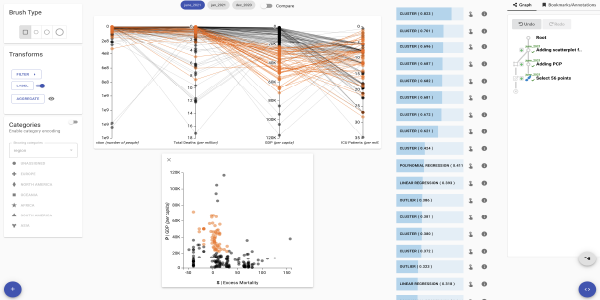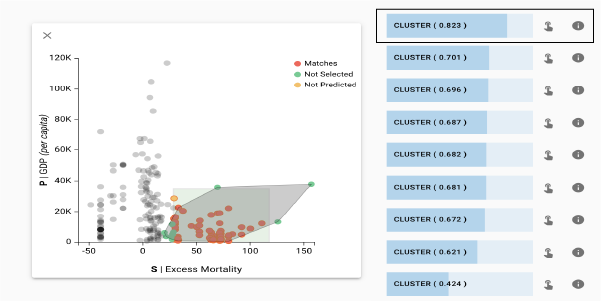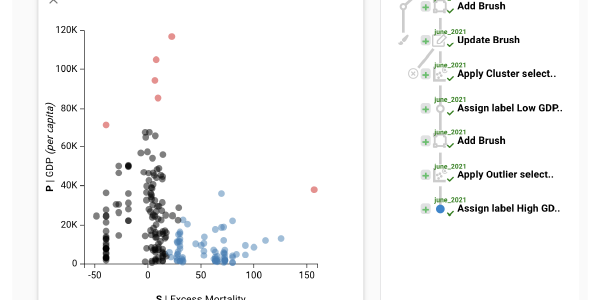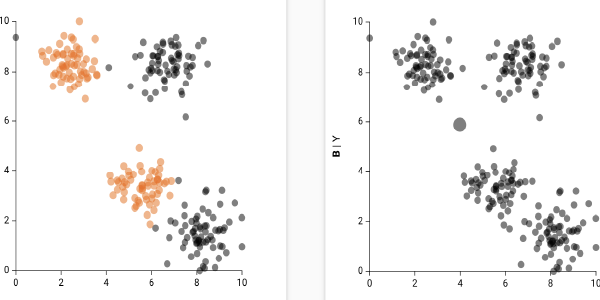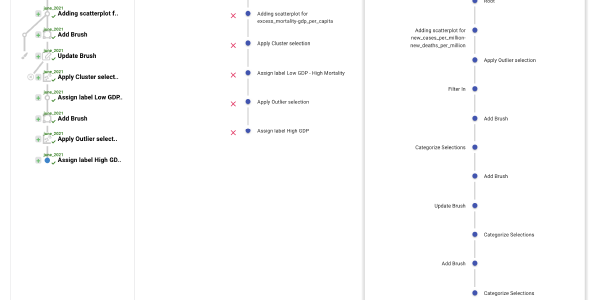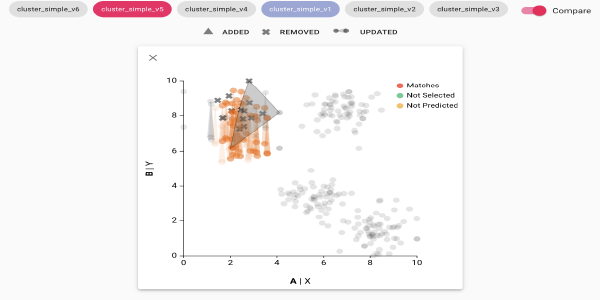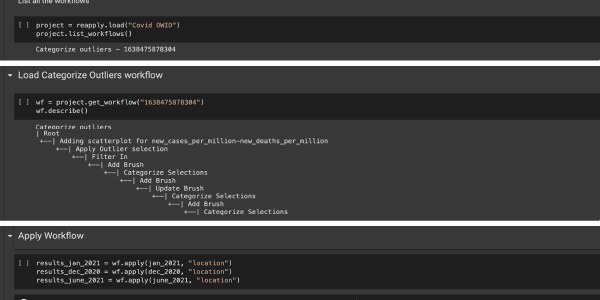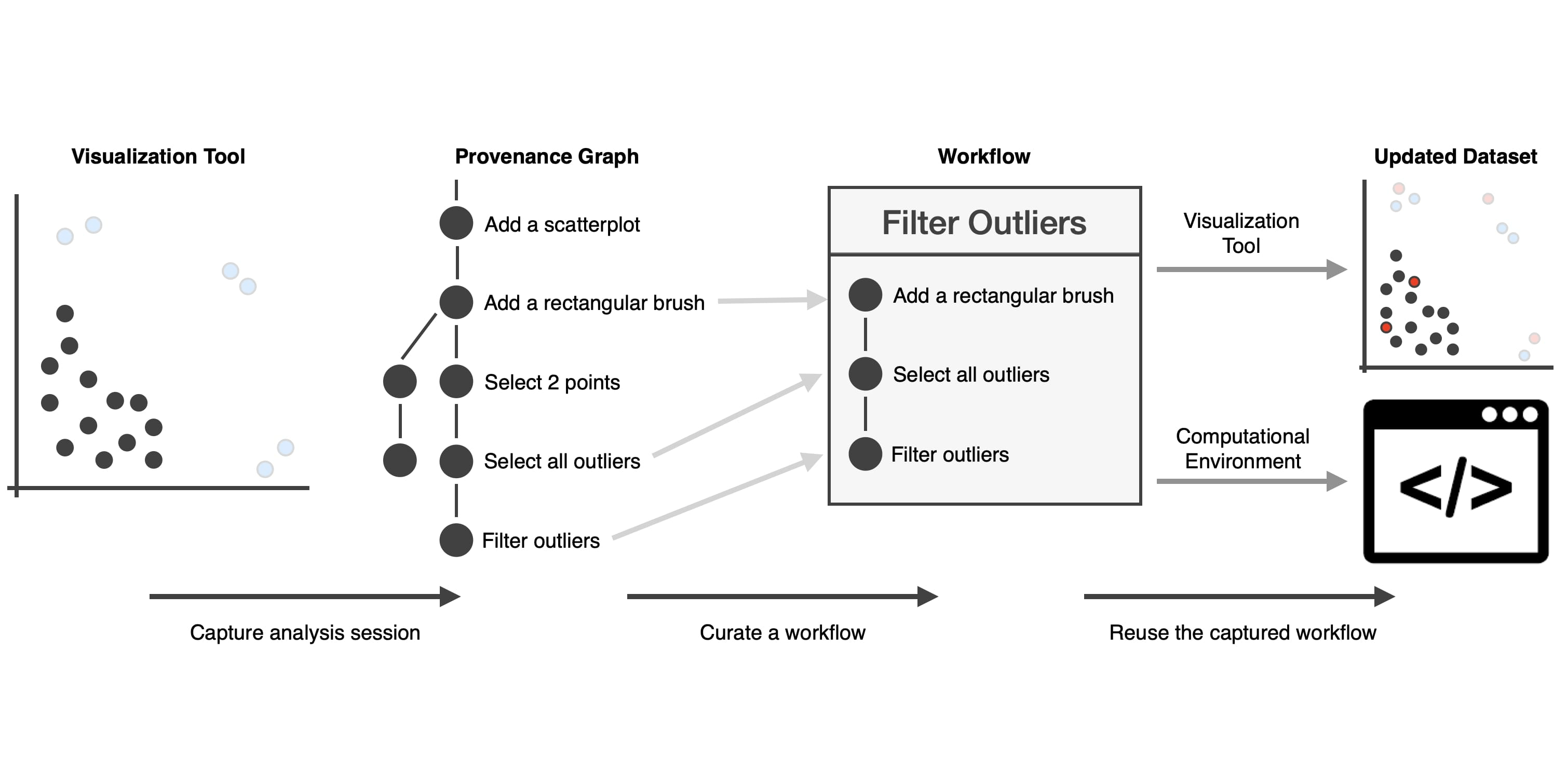
Abstract
Interactive visual analysis has many advantages, but an important disadvantage is that analysis processes and workflows cannot be easily stored and reused. This is in contrast to code-based analysis workflows, which can simply be run on updated datasets, and adapted when necessary. In this paper, we introduce methods to capture workflows in interactive visualization systems for different interactions such as selections, filters, categorizing/grouping, labeling, and aggregation. These workflows can then be applied to updated datasets, making interactive visualization sessions reusable. We demonstrate this specification using an interactive visualization system that tracks interaction provenance, and allows generating workflows from the recorded actions. The system can then be used to compare different versions of datasets and apply workflows to them. Finally, we introduce a Python library that can load workflows and apply it to updated datasets directly in a computational notebook, providing a seamless bridge between computational workflows and interactive visualization tools.Citation
Kiran Gadhave,
Zach Cutler,
Alexander Lex
Reusing Interactive Analysis Workflows
Computer Graphics Forum (EuroVis), 41(3): 133–144, doi:10.1111/cgf.14528, 2022.
BibTeX
@article{2022_eurovis_reusing,
title = {Reusing Interactive Analysis Workflows},
author = {Kiran Gadhave and Zach Cutler and Alexander Lex},
journal = {Computer Graphics Forum (EuroVis)},
doi = {10.1111/cgf.14528},
pages = {133–144},
volume = {41},
number = {3},
year = {2022}
}
Acknowledgements
We wish to thank the reviewers for their feedback on our submission. We would also like to thank derya akbaba and Jack Wilburn from Visualization Design Lab for their help with feedback interviews. We gratefully acknowledge funding by the National Science Foundation (IIS 1751238).
Images
These images are not part of the original paper and licensed using CC BY 4.0. If you use these images, please cite the paper. Click on the images for full resolution.
